|
|
|
 As
Karen Duquette was about to get her picture taken next to the big guitars,
a little boy ran up in front of her to get his photo taken by his dad.
His dad did not seem to care that his son cut in front of Karen. So
as the dad went to take his son's picture, Karen said to the boy, "Smile,
OR make a face." And just as the dad snapped the photo, the
little boy made a face, pulling his mouth wide with all his fingers
in his mouth. The dad did not take another photo, but grabbed the boy
by the hand and left. As
Karen Duquette was about to get her picture taken next to the big guitars,
a little boy ran up in front of her to get his photo taken by his dad.
His dad did not seem to care that his son cut in front of Karen. So
as the dad went to take his son's picture, Karen said to the boy, "Smile,
OR make a face." And just as the dad snapped the photo, the
little boy made a face, pulling his mouth wide with all his fingers
in his mouth. The dad did not take another photo, but grabbed the boy
by the hand and left.
Line cutters beware - things happen! Do not mess with Karen Duquette!
- (Although Karen does hope that the boy did not get in trouble for
listening to her.)
|
|
|
Below: The backstage tour began with the
mailboxes for stars inducted into the Grand Ole Opry Hall of Fame, followed
by a brief movie in front of a display. |
|
|
The decision to increase the
Opry's ranks is made exclusively by the show's management. They take
into account all the standards of success in country music radio airplay,
recorded music sales, touring success, and industry recognition. But
the Opry doesn't simply pass out invitations to the biggest stars with
the most hits. Opry membership requires a passion for country music's
fans, a connection to the music's history, and it requires commitment
even a willingness to make significant sacrifices to uphold that commitment.
Often, the Opry seeks out those who seek out the Opry, though decisions
aren't based on which artists appear most on the show. The Opry considers
career accomplishment as well as the potential for continued success.
|
Membership in the Opry remains one of
country music's crowning achievements. Such country music legends as
Hank Williams, Patsy Cline, Mary Robbins, Roy Cuff, the Carter family,
Bill Monroe, Ernest Tubby, Kitty Wells and Minnie Pearl became regulars
on the Opry's stage (although Williams was dismissed in 1952 due to
frequent drunkenness). In recent decades, the Opry has hosted such contemporary
country stars as Dolly Parton, Garth Brooks, Reba McEntire, Josh Turner,
Carrie Underwood, Brad Paisley, Rascal Flatts, Dierks Bentley, Blake
Shelton and the Dixie Chicks. |
Below: Two sets of plaques
with the name of the stars and a photo of Minnie Pearl in-between the
two sets of plaques. |
|
|
Below: Karen Duquette took
a photo of a display for Minnie Pearl. Karen's reflection can be seen
in the first photo, so she took the second photo at an angle so her
reflection would not be in the photo. |
|
|
Below; Karen Duquette and her sister,
Ilse Blahak, in the main lounge backstage of the Grand Ole Opry. |
|
|
 The Grand Ole Opry began just five years after commercial radio was born in the United States. In 1925, the National Life and Accident Insurance Company built a radio station as a public service to the local community and with the hope that the new medium could advertise insurance policies. The station's call letters, WSM, stood for the company's motto: "We Shield Millions." Soon after going on the air, National Life hired one of the nation's most popular announcers, George D. Hay, as WSM's first program director. Hay, a former Memphis newspaper reporter who'd most recently started a barn dance show on Chicago radio powerhouse WLS, along with championship fiddler, Uncle Jimmy Thompson, created the WSM Barn Dance. Hay's weekly broadcasts continued and proved enormously popular, and he renamed the show the Grand Ole Opry in 1927. Crowds soon clogged hallways as they gathered to observe the performers, prompting the National Life company to build an acoustically designed auditorium capable of holding 500 fans. The new space wasn't enough to keep up with the audience's increasing enthusiasm for the weekly show. The Grand Ole Opry began just five years after commercial radio was born in the United States. In 1925, the National Life and Accident Insurance Company built a radio station as a public service to the local community and with the hope that the new medium could advertise insurance policies. The station's call letters, WSM, stood for the company's motto: "We Shield Millions." Soon after going on the air, National Life hired one of the nation's most popular announcers, George D. Hay, as WSM's first program director. Hay, a former Memphis newspaper reporter who'd most recently started a barn dance show on Chicago radio powerhouse WLS, along with championship fiddler, Uncle Jimmy Thompson, created the WSM Barn Dance. Hay's weekly broadcasts continued and proved enormously popular, and he renamed the show the Grand Ole Opry in 1927. Crowds soon clogged hallways as they gathered to observe the performers, prompting the National Life company to build an acoustically designed auditorium capable of holding 500 fans. The new space wasn't enough to keep up with the audience's increasing enthusiasm for the weekly show.
The Opry went through a number of homes in several parts of Nashville before settling, in 1943, at the Ryman Auditorium, a former religious meeting house built in 1892. The Opry stayed at the Ryman for nearly 31 years. Many of the show's legends spent most of their Opry runs there.
In 1955, Ralston Purina began sponsoring an hour-long regional-network television show from the Ryman stage featuring Opry stars. And in 1974, the Opry moved from the Ryman to a new, larger facility at the heart of a multi-million-dollar entertainment complex nine miles from downtown Nashville. However, the Opry didn't completely leave the Ryman behind. A six-foot circle of wood was removed from the Ryman stage and placed center stage at the new Grand Ole Opry House. As that wooden circle became the heart of the stage, the Opry's heart is its music and its members - a broad scope of styles by a wide range of artists. (see photos below of The Circle.) |
|
|
|
|
 Below: The black line in the center of the below photos marks the water level from the flood on May 3, 2010 as the Cumberland River put the famous state under nearly four feet of water. Everything on the first floor had to be replaced, giving the Grand Ole Opry the opportunity to make some upgrades. The backstage was also given a total transformation. The 18 dressing rooms were designed in specific themes that really honor the history of the Grand Ole Opry and honor the history of country music. (photos of some of these rooms are below) Below: The black line in the center of the below photos marks the water level from the flood on May 3, 2010 as the Cumberland River put the famous state under nearly four feet of water. Everything on the first floor had to be replaced, giving the Grand Ole Opry the opportunity to make some upgrades. The backstage was also given a total transformation. The 18 dressing rooms were designed in specific themes that really honor the history of the Grand Ole Opry and honor the history of country music. (photos of some of these rooms are below)
|
|
|
|
|
Below; Lee Duquette enjoyed
the tour of the dressing rooms for stars. Each room had a Grand Ole
Opry label and star on the floor by its door. |
|
|
Below: "Stars and Stripes"
dressing room and "It Takes Two" dressing room |
|
|
Below: "It All
Begins With A Song" dressing room |
|
|
Below "Women of
Country" dressing room and "Wagonmaster"
dressing room |
|
|
Below: Roy Acuff's dressing room |
|
|
|
Below: Then the two RV Gypsies'
tour continued on to the main performance room and stage of the Grand
Ole Opry. |
|
|
|
|
|
|
|
|
|
|
|
|
|
|
Below: The six-foot circle
of dark oak wood in the Opry House stage is shiny but clearly well worn.
Cut from the stage of the Opry's famous former home, the Ryman Auditorium,
this circle gives newcomers and veterans alike the opportunity to sing
on the same spot that once supported Uncle Dave Macon, Ernest Tubb,
Patsy Cline, and others. "That circle is the most magical thing
when you're a performer," says Opry member Brad Paisley, "To
stand there and get to sing on those same boards that probably still
contain dust from Hank Williams' boots."
Many things about the Opry have changed over the years - its members,
the sound of its music, even its home. But there is always that oak-solid
center to remind every singer or musician who steps inside that they
take part in something much larger than themselves, that wherever they
go they have a connection to the legends and the giants who came before
them.
As that wooden circle is the heart of the stage, the Opry's heart is its music and its members - a broad scope of styles by a wide range of artists. |
Below: The two RV Gypsies
stood on the famous wood circle at the Grand Ole Opry. They were told
that they could even sing if they wanted to, but that would have been
a major disaster. |
|
|
|
|
|
|
Below: The backstage tour
was over, and everyone on the tour had to exit through the gift shop,
of course. |
|
|
|
|
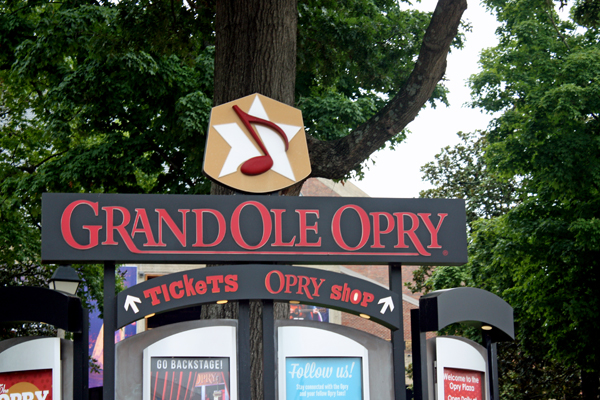
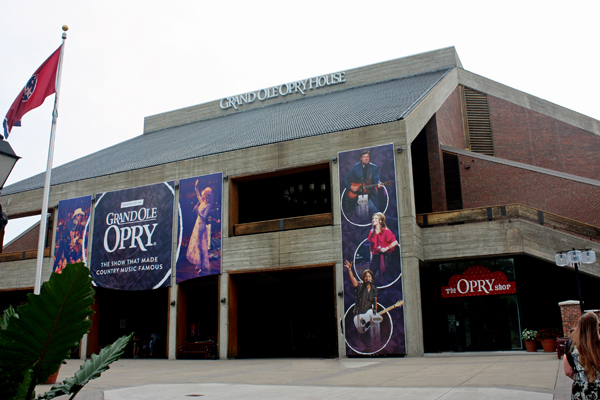

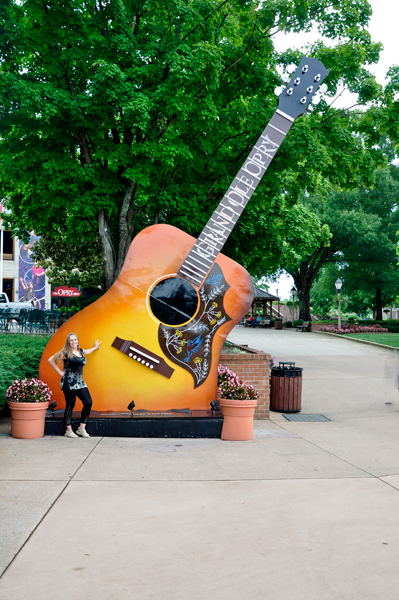
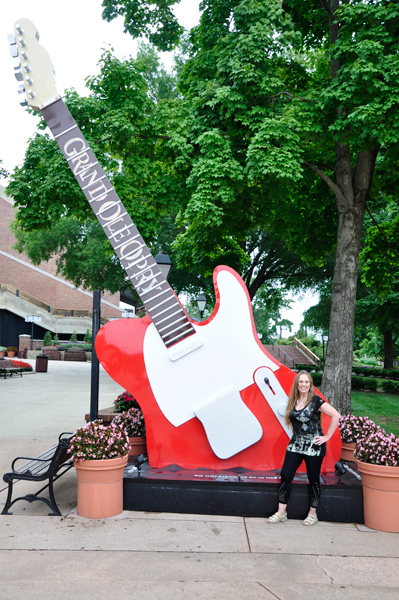
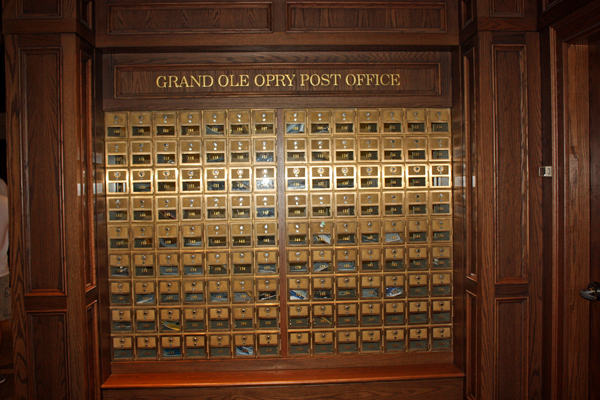
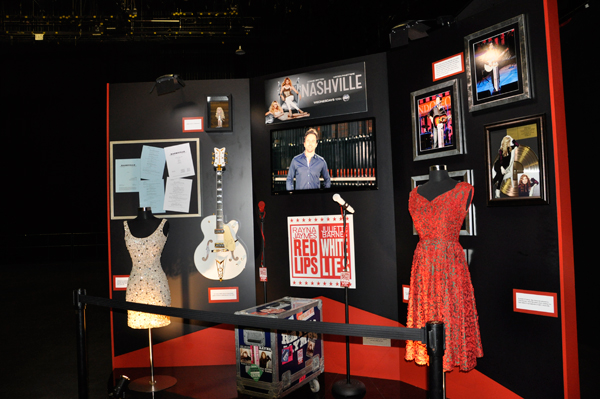

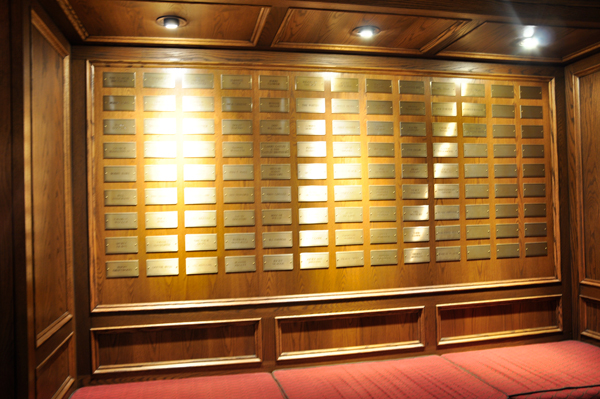
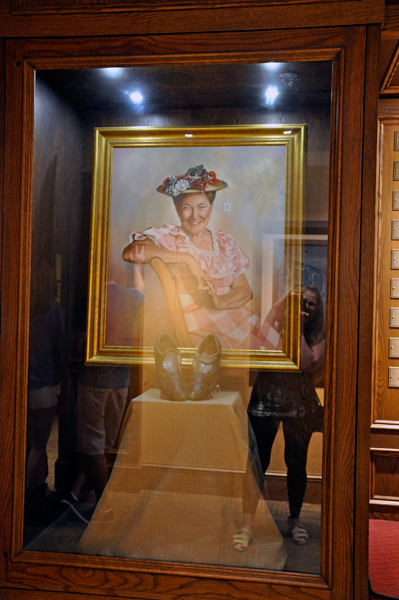
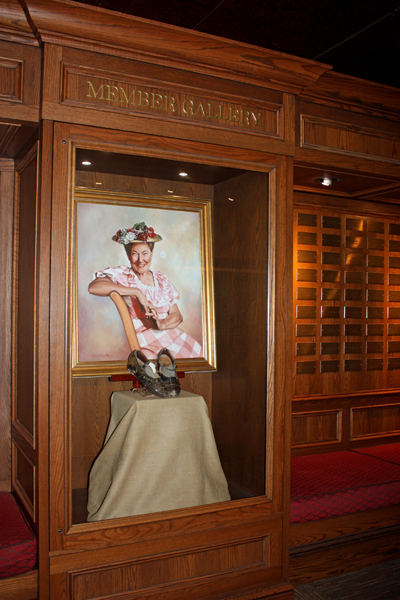
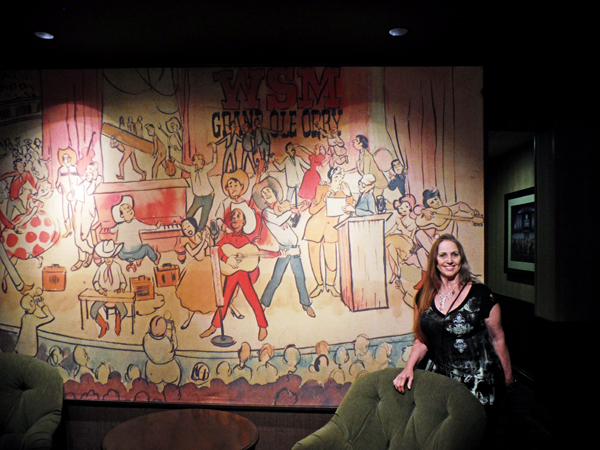
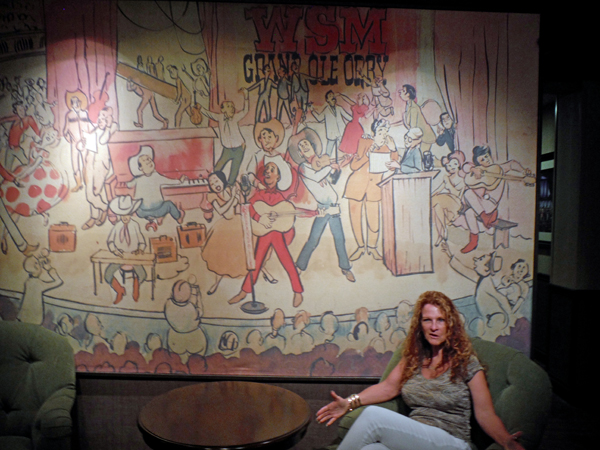
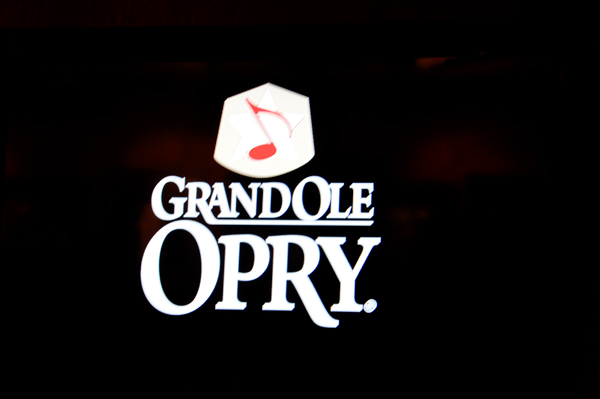

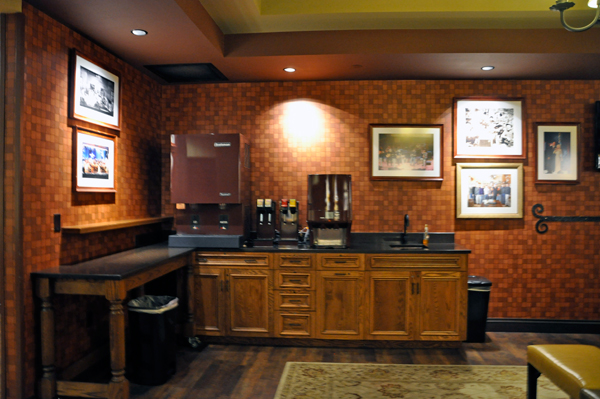
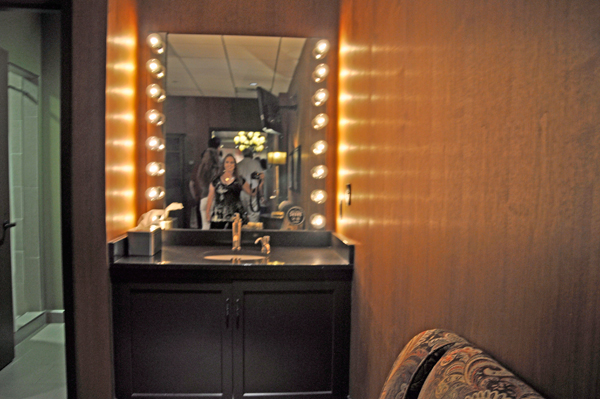
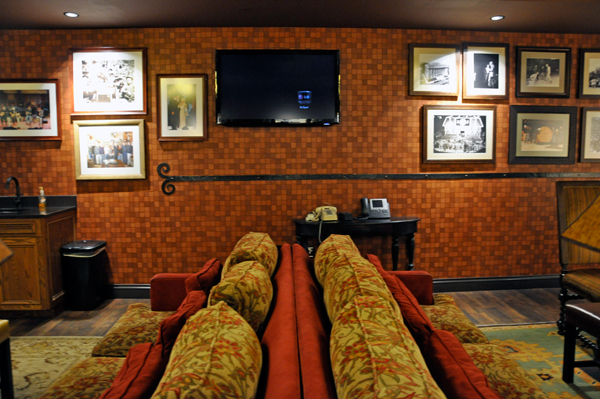
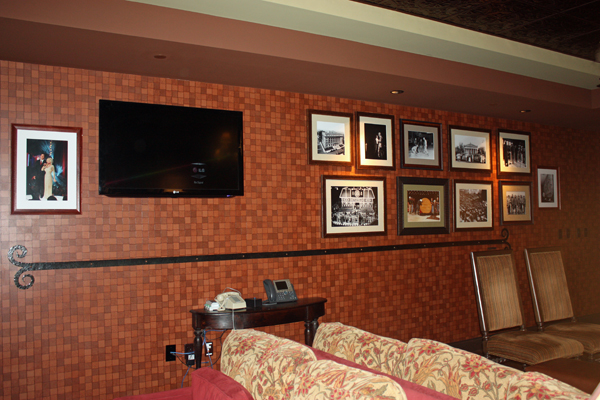
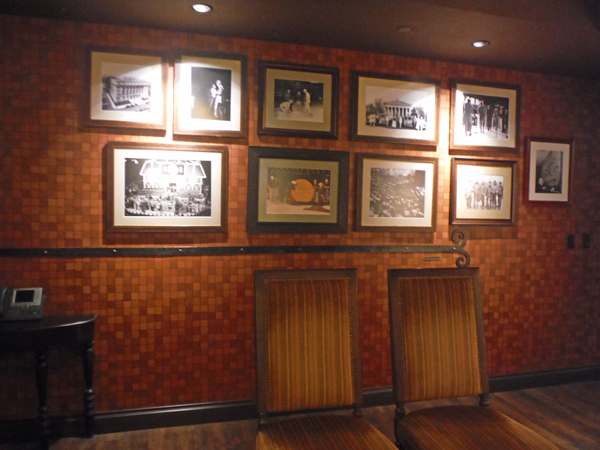
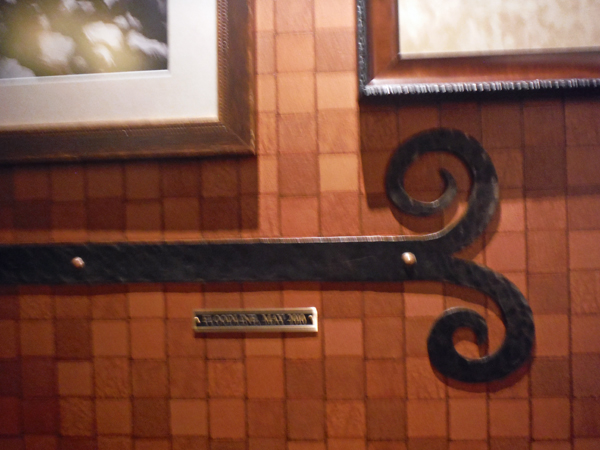
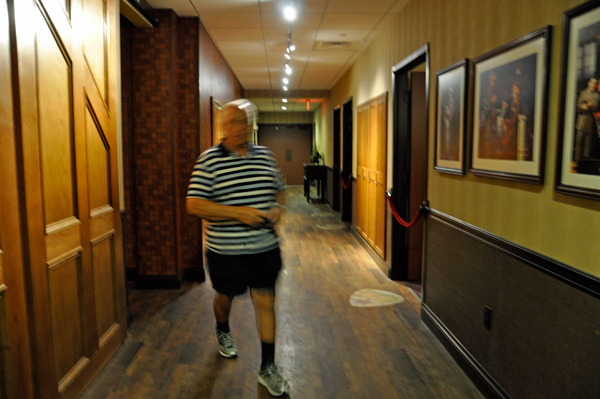
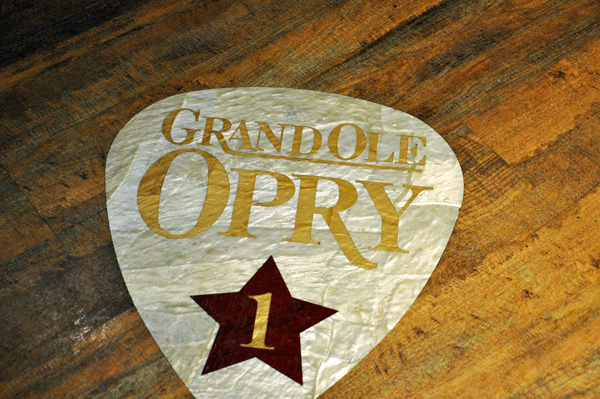
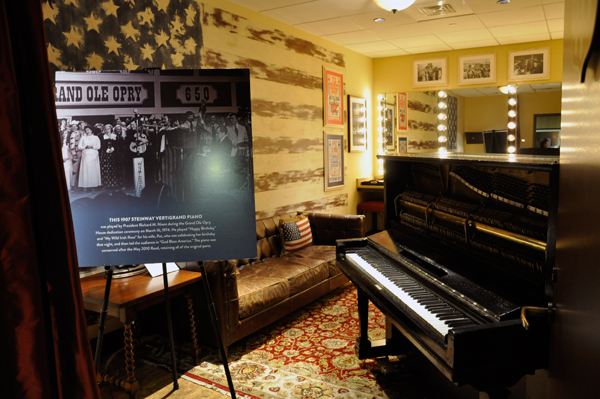
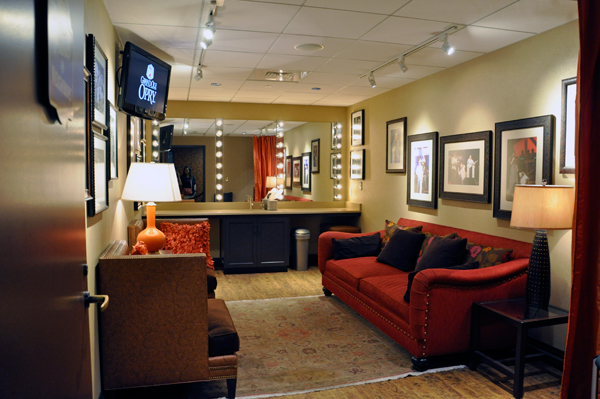
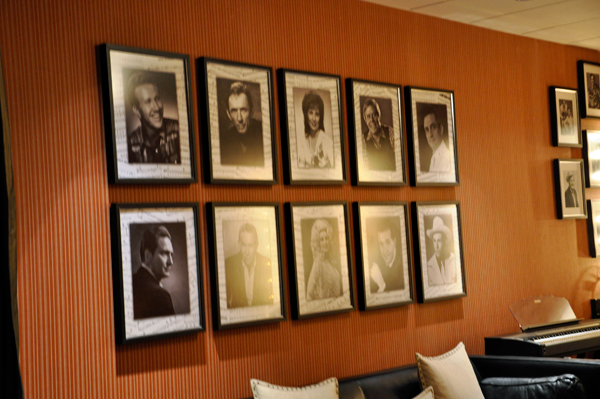
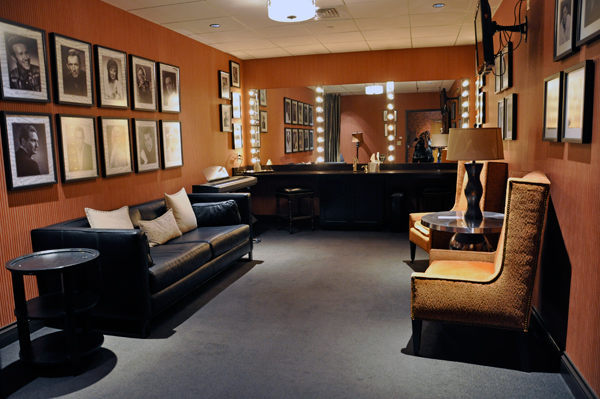
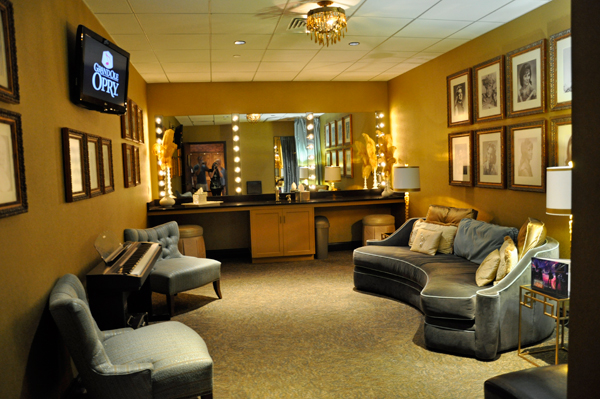
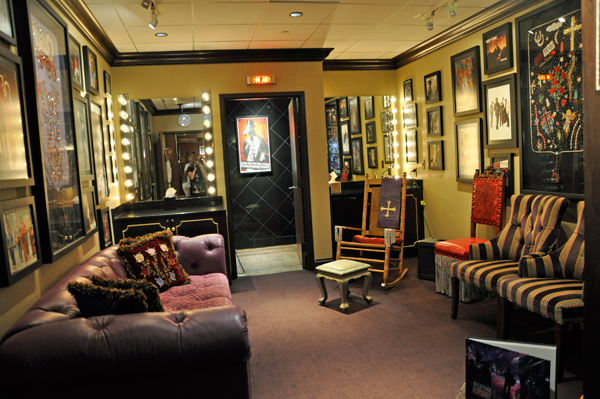
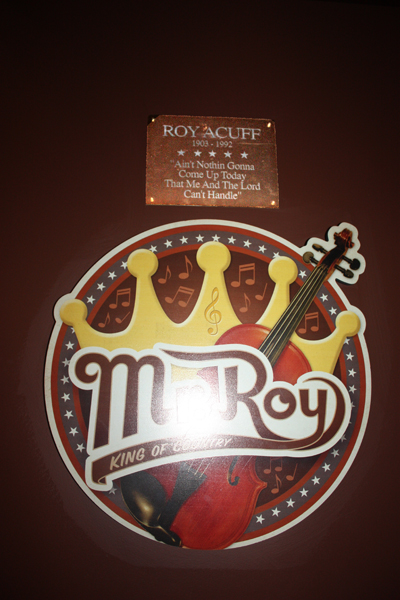
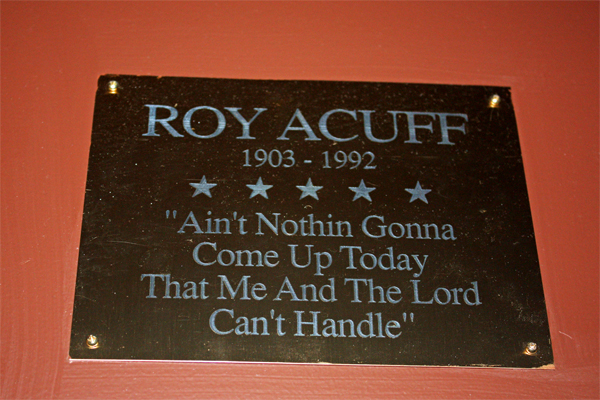
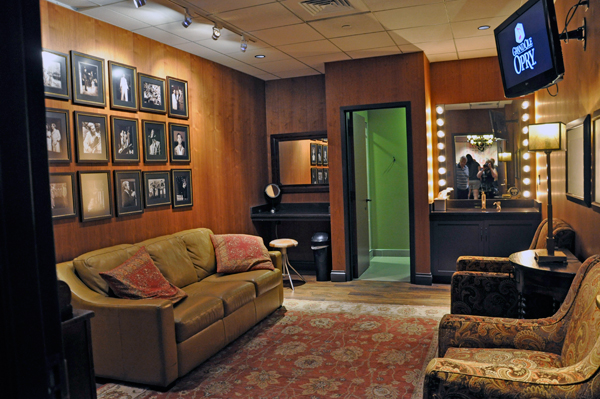

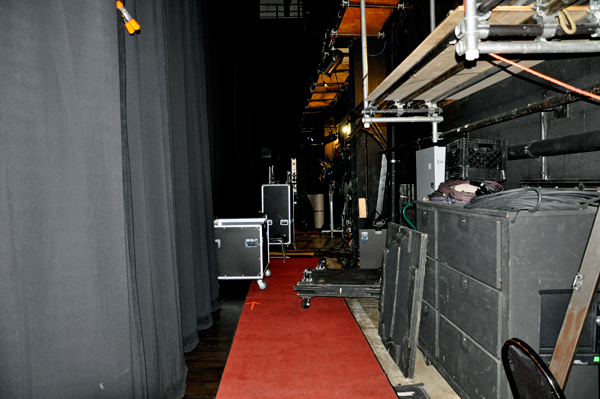
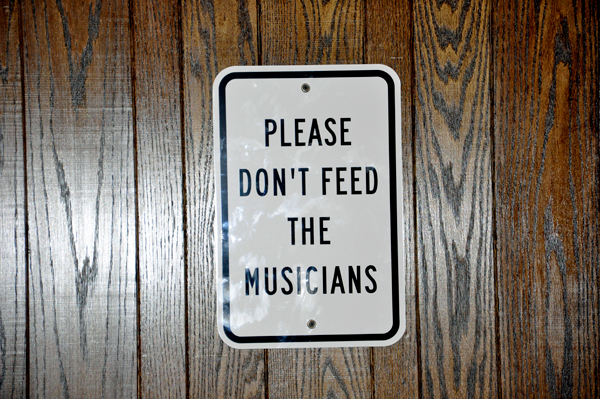
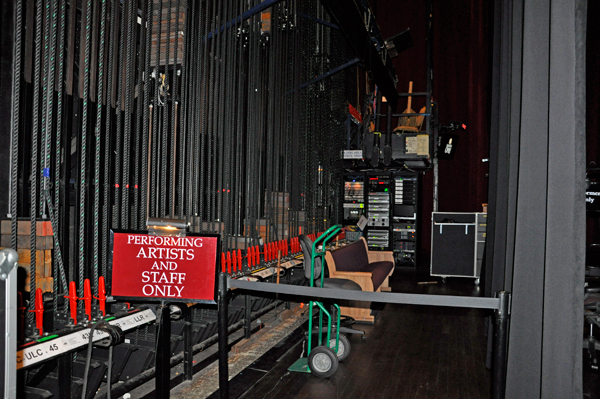
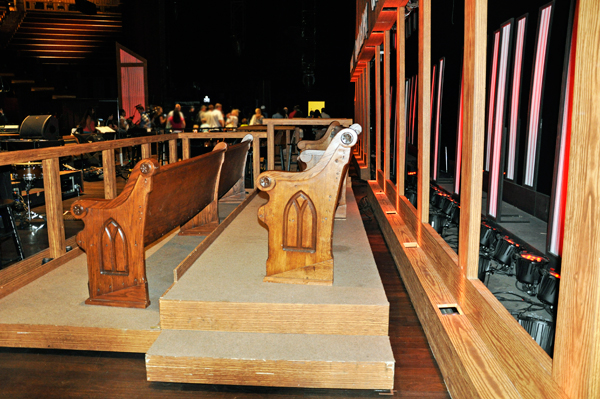
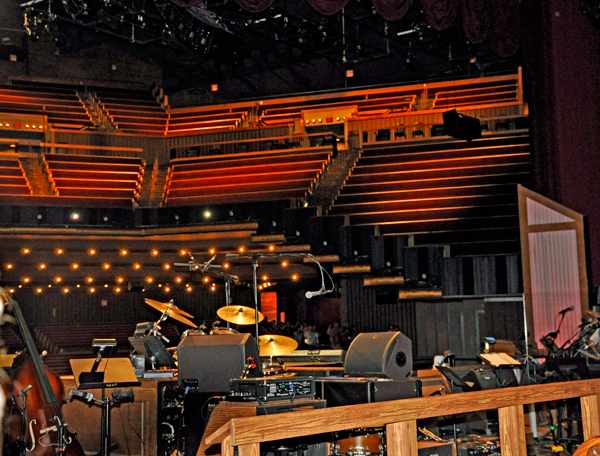
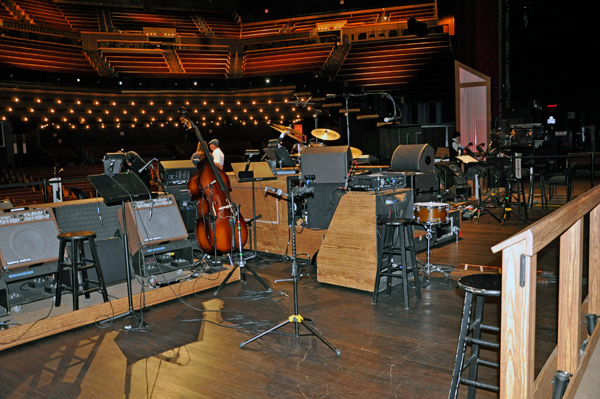
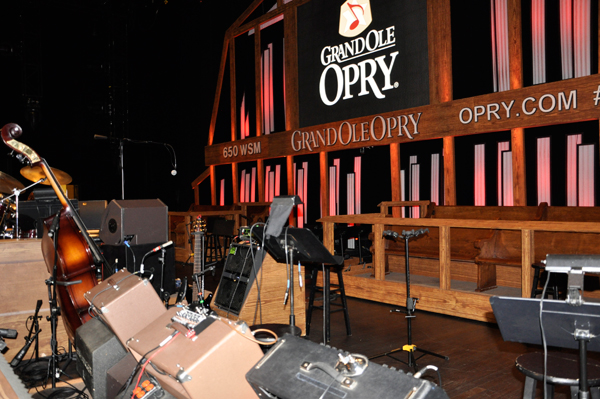
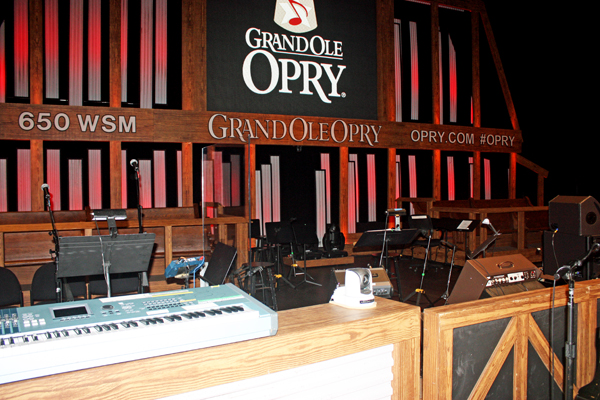
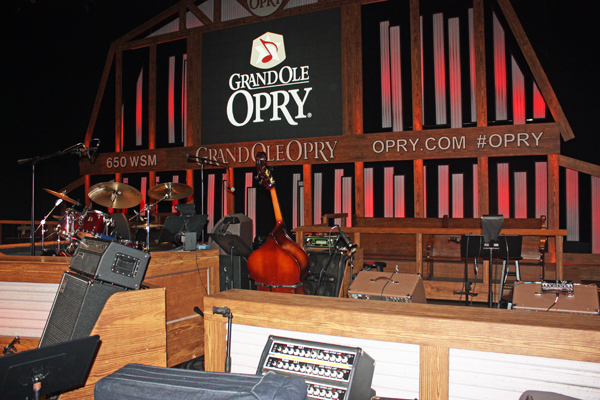
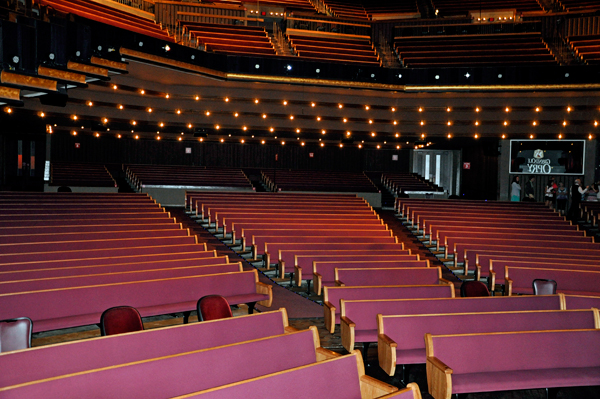
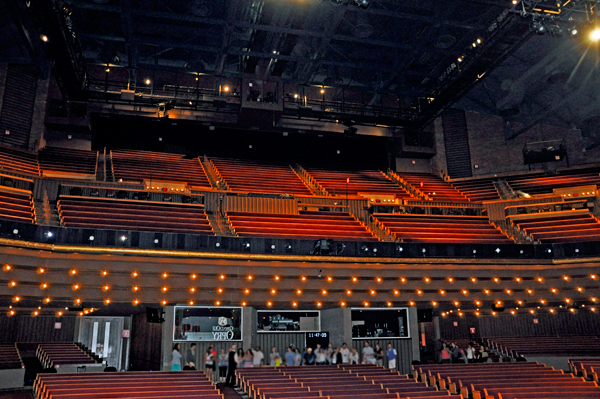
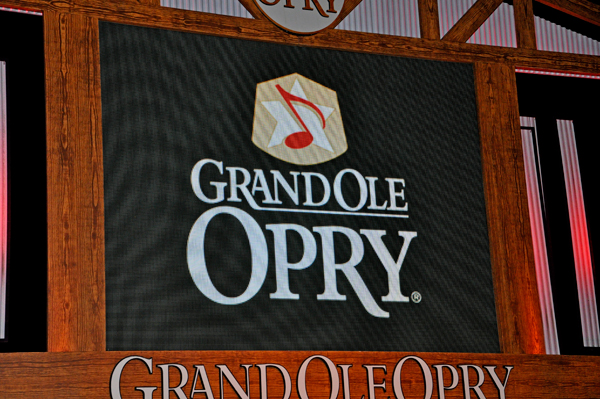
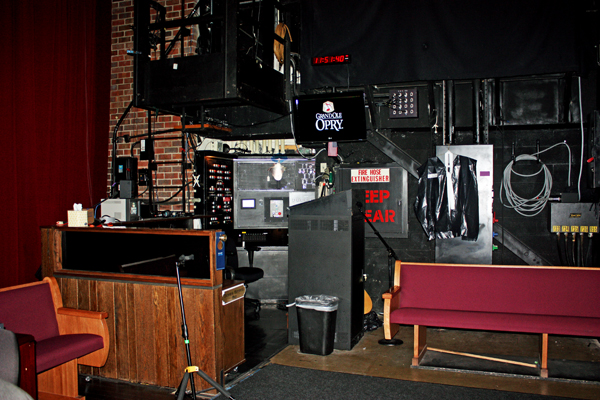
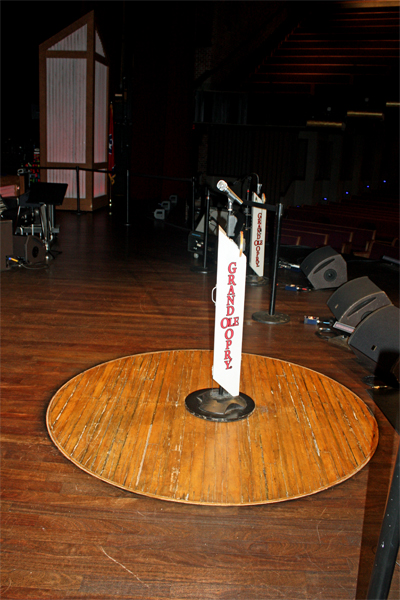
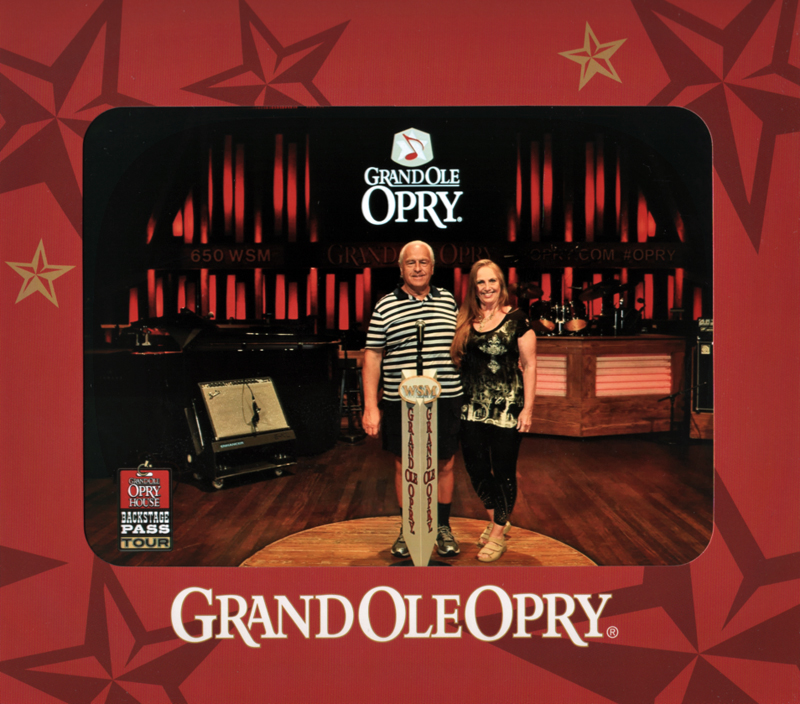


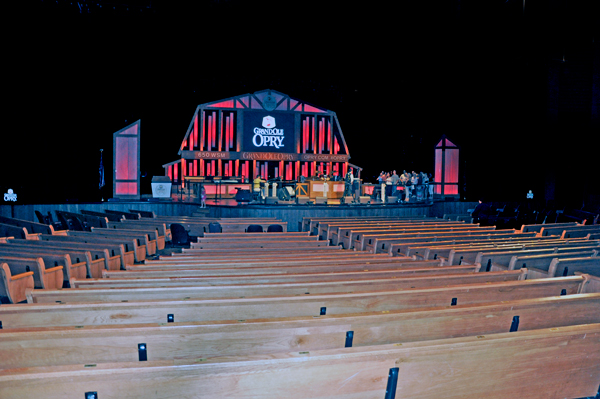
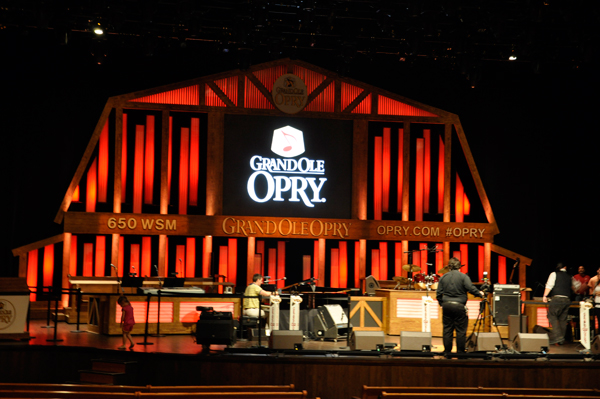
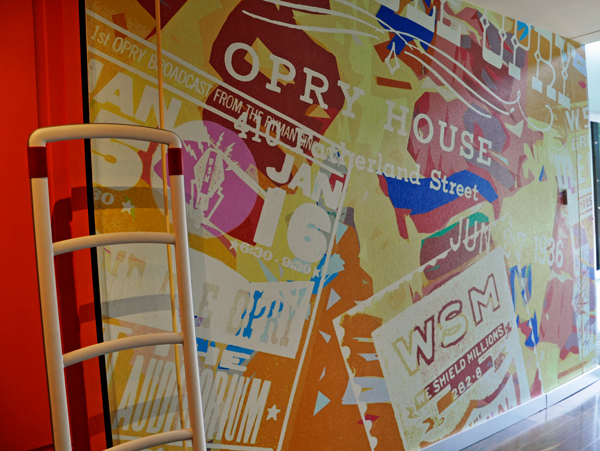
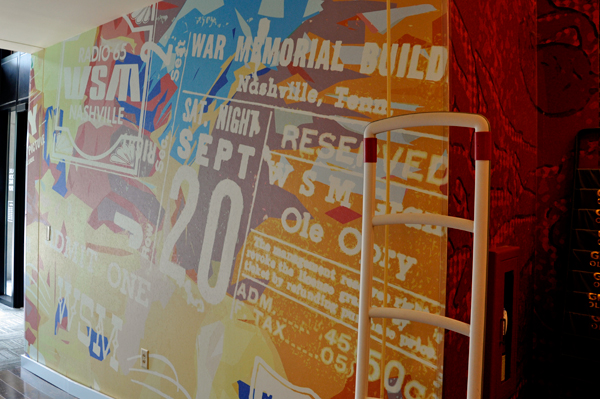
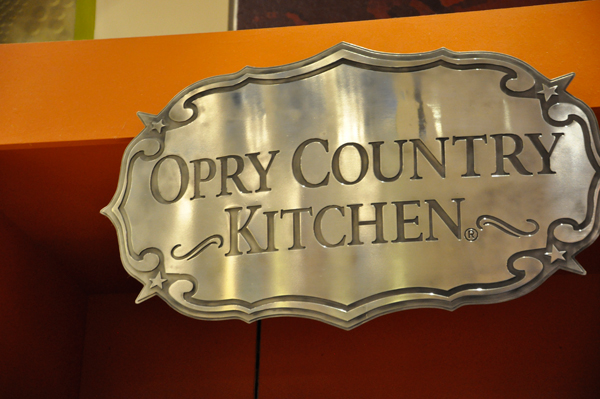
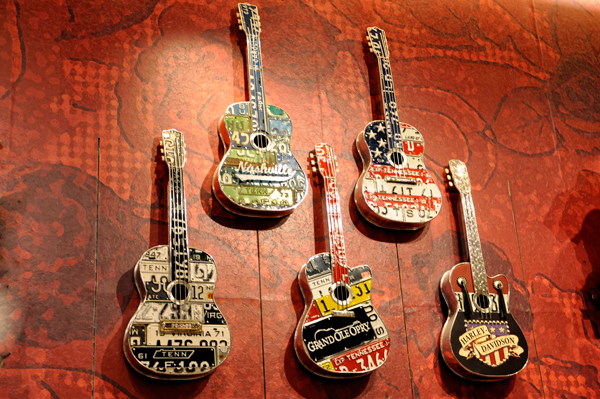























 As
Karen Duquette was about to get her picture taken next to the big guitars,
a little boy ran up in front of her to get his photo taken by his dad.
His dad did not seem to care that his son cut in front of Karen. So
as the dad went to take his son's picture, Karen said to the boy, "Smile,
OR make a face." And just as the dad snapped the photo, the
little boy made a face, pulling his mouth wide with all his fingers
in his mouth. The dad did not take another photo, but grabbed the boy
by the hand and left.
As
Karen Duquette was about to get her picture taken next to the big guitars,
a little boy ran up in front of her to get his photo taken by his dad.
His dad did not seem to care that his son cut in front of Karen. So
as the dad went to take his son's picture, Karen said to the boy, "Smile,
OR make a face." And just as the dad snapped the photo, the
little boy made a face, pulling his mouth wide with all his fingers
in his mouth. The dad did not take another photo, but grabbed the boy
by the hand and left.  The Grand Ole Opry began just five years after commercial radio was born in the United States. In 1925, the National Life and Accident Insurance Company built a radio station as a public service to the local community and with the hope that the new medium could advertise insurance policies. The station's call letters, WSM, stood for the company's motto: "We Shield Millions." Soon after going on the air, National Life hired one of the nation's most popular announcers, George D. Hay, as WSM's first program director. Hay, a former Memphis newspaper reporter who'd most recently started a barn dance show on Chicago radio powerhouse WLS, along with championship fiddler, Uncle Jimmy Thompson, created the WSM Barn Dance. Hay's weekly broadcasts continued and proved enormously popular, and he renamed the show the Grand Ole Opry in 1927. Crowds soon clogged hallways as they gathered to observe the performers, prompting the National Life company to build an acoustically designed auditorium capable of holding 500 fans. The new space wasn't enough to keep up with the audience's increasing enthusiasm for the weekly show.
The Grand Ole Opry began just five years after commercial radio was born in the United States. In 1925, the National Life and Accident Insurance Company built a radio station as a public service to the local community and with the hope that the new medium could advertise insurance policies. The station's call letters, WSM, stood for the company's motto: "We Shield Millions." Soon after going on the air, National Life hired one of the nation's most popular announcers, George D. Hay, as WSM's first program director. Hay, a former Memphis newspaper reporter who'd most recently started a barn dance show on Chicago radio powerhouse WLS, along with championship fiddler, Uncle Jimmy Thompson, created the WSM Barn Dance. Hay's weekly broadcasts continued and proved enormously popular, and he renamed the show the Grand Ole Opry in 1927. Crowds soon clogged hallways as they gathered to observe the performers, prompting the National Life company to build an acoustically designed auditorium capable of holding 500 fans. The new space wasn't enough to keep up with the audience's increasing enthusiasm for the weekly show. 


